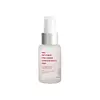What's inside
What's inside
 Key Ingredients
Key Ingredients

No key ingredients
 Benefits
Benefits

 Concerns
Concerns

No concerns
 Ingredients Side-by-side
Ingredients Side-by-side

Water
Skin ConditioningPropanediol
SolventHamamelis Virginiana Extract
Antiseborrhoeic1,2-Hexanediol
Skin ConditioningPortulaca Oleracea Extract
Skin ConditioningTrehalose
HumectantCitrus Aurantium Dulcis Oil
MaskingCitrus Nobilis Peel Oil
MaskingLitsea Cubeba Fruit Oil
MaskingDaucus Carota Sativa Seed Oil
EmollientBetaine
HumectantC12-14 Pareth-12
EmulsifyingSodium Citrate
BufferingCitric Acid
BufferingDisodium EDTA
Inositol
HumectantEthylhexylglycerin
Skin ConditioningWater, Propanediol, Hamamelis Virginiana Extract, 1,2-Hexanediol, Portulaca Oleracea Extract, Trehalose, Citrus Aurantium Dulcis Oil, Citrus Nobilis Peel Oil, Litsea Cubeba Fruit Oil, Daucus Carota Sativa Seed Oil, Betaine, C12-14 Pareth-12, Sodium Citrate, Citric Acid, Disodium EDTA, Inositol, Ethylhexylglycerin
Water
Skin ConditioningGlycerin
HumectantMethylpropanediol
SolventNiacinamide
Smoothing1,2-Hexanediol
Skin ConditioningHydrolyzed Collagen
EmollientPortulaca Oleracea Extract
Skin ConditioningAloe Barbadensis Leaf Juice
Skin ConditioningCitrus Aurantium Amara Flower Water
MaskingPanthenol
Skin ConditioningTrehalose
HumectantSaccharomyces Ferment
Skin ConditioningCryptomeria Japonica Leaf Extract
HumectantNelumbo Nucifera Leaf Extract
Skin ConditioningAdenosine
Skin ConditioningDisodium EDTA
Butylene Glycol
HumectantEthylhexylglycerin
Skin ConditioningWater, Glycerin, Methylpropanediol, Niacinamide, 1,2-Hexanediol, Hydrolyzed Collagen, Portulaca Oleracea Extract, Aloe Barbadensis Leaf Juice, Citrus Aurantium Amara Flower Water, Panthenol, Trehalose, Saccharomyces Ferment, Cryptomeria Japonica Leaf Extract, Nelumbo Nucifera Leaf Extract, Adenosine, Disodium EDTA, Butylene Glycol, Ethylhexylglycerin
Ingredients Explained
These ingredients are found in both products.
Ingredients higher up in an ingredient list are typically present in a larger amount.
1,2-Hexanediol is a synthetic liquid and another multi-functional powerhouse.
It is a:
- Humectant, drawing moisture into the skin
- Emollient, helping to soften skin
- Solvent, dispersing and stabilizing formulas
- Preservative booster, enhancing the antimicrobial activity of other preservatives
Disodium EDTA plays a role in making products more stable by aiding other preservatives.
It is a chelating agent, meaning it neutralizes metal ions that may be found in a product.
Disodium EDTA is a salt of edetic acid and is found to be safe in cosmetic ingredients.
Learn more about Disodium EDTAEthylhexylglycerin (we can't pronounce this either) is commonly used as a preservative and skin softener. It is derived from glyceryl.
You might see Ethylhexylglycerin often paired with other preservatives such as phenoxyethanol. Ethylhexylglycerin has been found to increase the effectiveness of these other preservatives.
This extract comes from Purslane, a succulent. It has anti-inflammatory, antioxidant, and hydrating properties.
Purslane is very nutritious. It contains omega-3 fatty acids, NMFs, many vitamins, minerals, and antioxidants. The vitamins found in purslane include: Vitamin C, Vitamin A, and Vitamin E.
Fun fact: Purslane is a succulent with an extensive habitat. It is used in traditional Korean medicine to treat irritated skin.
Nowadays, purslane is becoming a superfood due to its highly nutritious content.
Learn more about Portulaca Oleracea ExtractTrehalose is a disaccharide made of two glucose molecules (glucose is sugar!). Trehalose is used to help moisturize skin. It also has antioxidant properties.
As a humectant, trehalose helps draw moisture from the air to your skin. This helps keep your skin hydrated.
Due to its antioxidant properties, trehalose may help with signs of aging. Antioxidants help fight free-radical molecules, unstable molecules that may damage your skin.
In medicine, trehalose and hyaluronic acid are used to help treat dry eyes.
Some animals, plants, and bacteria create trehalose as a source of energy to survive freeze or lack of water.
Learn more about TrehaloseWater. It's the most common cosmetic ingredient of all. You'll usually see it at the top of ingredient lists, meaning that it makes up the largest part of the product.
So why is it so popular? Water most often acts as a solvent - this means that it helps dissolve other ingredients into the formulation.
You'll also recognize water as that liquid we all need to stay alive. If you see this, drink a glass of water. Stay hydrated!
Learn more about Water